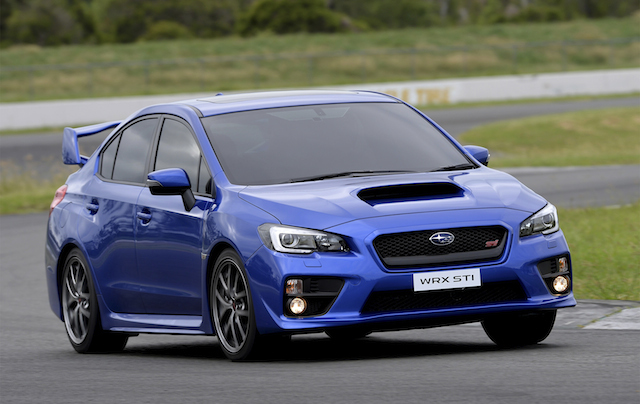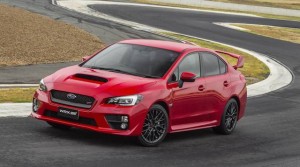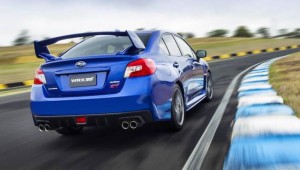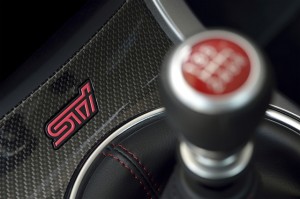
Subaru kicks off the marketing campaign for the fourth-generation WRX STi in New Zealand with the folksy line: “Goes like a vegan out of a steakhouse.”
No translation needed. It’s just as fast from from a sales point of view – Subaru NZ is getting six STi models (above) a month from the factory in Japan and they are going out the steakhouse door as soon as they arrive.

It’s a no-brainer, the car’s price/performance factor guarantees that. Add electronic safety aids, a five-star crash rating and uncle tom cobbley and all and the STi with cloth, manually adjustable seats, no sunroof costs $59,990. The so-called premium STi with leather, electrically adjustable seats, and sunroof costs $64,990.
For that you get a boosted 2.5-litre four-cylinder sedan that recorded the exact same time (38.5sec) over the standing mile as 2.7-litre six-cylinder Porsche Cayman coupe, but beats the Cayman over the standing quarter mile 13.8sec to 14.2sec. The only point here is that the entry-level Cayman is around twice the price at $120,900 (manual) or $126,900 (automatic).
See the sprint race
Watch rally champ Mark Higgins pilot the STi on the Isle of Man TT course

What you see with the STi is what you get, except for the large rear wing. It’s optional. “We realise some customers prefer a more subtle style and don’t necessarily want to make such a bold statement on the road with the big wing,” said Subaru NZ managing director Wallis Dumper.
“Having said that we are also cognisant of the fact that Subaru drivers share an ‘attitude’ more than the typical demographic other brands may share. So our advertising for STi compliments that Kiwi Subaru attitude and will feature the wing, which has been synonymous with the STi up until now.”
Synonymous also is the 2.5-litre engine, which has been around in one form or another for many years. It first appeared in the STi in 2007, tuned for export markets with a single turbocharger to deliver 221kW at 6000rpm and 407Nm at 4000rpm. It still does. It’s strong and quick but not as efficient as the free-revving, direct-injection 2.0-litre unit in the standard WRX.

Take the 2.0-litre engine’s torque delivery, for example. Its 350Nm is on song in the WRX between 2400 and 5200rpm, making it far more flexible than the STi’s 2.5-litre unit and its 407Nm at 4000rpm. It is this 2.0-litre engine which is under the bonnet of Japan’s domestic STi, its twin-scroll turbocharger helping to deliver 227kW and 422Nm. Used importers will note the differences in power and torque.
Subaru’s trademark all-wheel-drive system gets the STi’s 221kW/407Nm to the ground via a short-throw, six-speed manual gearbox. Together they get the car from 0-100km/h in around five seconds. The peaky engine means things happen best above 3000rpm, where the slingshot acceleration and four-paw system with torque vectoring hooks up to fire you out of corners.
That’s where the STi really shines, thanks to a chassis that’s 140 per cent stiffer than the old car and a well-weighted hydraulic steering rack that finds a line and sticks to it.The wheelbase in the new STi is 25mm longer, which means more interior room for passengers. But a stiffer suspension set-up makes the ride a touch harsh on some surfaces.
The dashboard is made of a nice soft-touch material and the layout of the instruments is efficient. But apart from the excellent front seats, the interior overall is a touch drab compared with European rivals like the Volkswagen Golf R. But the VW is not as roomy in the back as the STi – and at upwards of $70,000, it is around $7000 more expensive.

